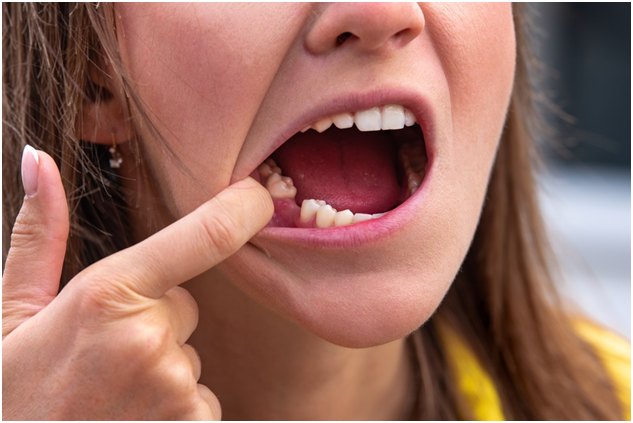When some people go to the dentist and are presented with treatment options for their teeth, they are quick to say, “just pull it.” This option is often chosen because it is the cheapest option at the time; however, many of these people fail to realize how “expensive” this decision will be for them in the long run, not only in terms of money but also in terms of quality of life.
If you have a significant number of missing teeth, you do not need me to tell you how much of a challenge not having teeth can be. Once most of your back teeth are missing, it affects the quality of your life and health because it becomes tough, if not impossible, to eat healthier foods such as fruits and vegetables. This leads to eating processed, non-healthy food options, which can lead to obesity. Obesity is linked to heart disease, diabetes, and sleep apnea, to name a few.
There are many preventative measures that you can take to prevent tooth loss; however, the question is, what do you do if you have already lost or about to lose all your teeth. First of all, do not despair; studies done in epidemiology show that roughly 40 million Americans are missing all their teeth, so you are not alone. Secondly, you have options, especially with the advances in technology in dentistry. Some of the options you have are Immediate dentures, Complete dentures, Snap-in dentures (overdentures), and All-on-X dentures (All-on-4).
Immediate and Complete Dentures
These dentures are the “conventional” types of dentures that are supported only by the tissue in your mouth and come in and out of your mouth.
The main difference between the immediate denture and the complete denture is that an immediate denture is done if you still have some natural teeth. An impression of your teeth is taken and used to make your dentures. When these dentures come back from the lab, you will get your teeth pulled and dentures placed on the same day; that way, you do not go without teeth. I like to call immediate dentures “healing dentures” because they are only meant to be used for 6 months to a year after getting your teeth pulled. After that time frame, you will start the process of getting a complete denture made.
The complete denture looks the same as an immediate denture. The main difference is that this denture is made a minimum of 6 weeks after all teeth have been removed and your tissue has healed and requires multiple steps from beginning to end. The complete denture usually fits and looks better than an immediate denture and lasts longer as well.
Snap-In Dentures/Overdentures
These dentures are supported by both the tissue in your mouth and by implants. Like the “conventional” types of dentures, you can take these dentures in and out; however, these fit and feel a lot better. For overdentures, you will get a minimum of 4 implants placed on the top jaw and a minimum of 2 implants on the lower jaw.
Whenever you get implants placed, it preserves the bone in your mouth, so if you ever need to replace your denture 10-15 years down the line, you never have to worry about not having enough bone (This a huge problem for those patients who opt for conventional dentures since they continue to lose bone in their jaws once the teeth are gone)
The only drawback of these dentures is that they come in and out and have little rings placed in the denture to help them fit snuggly. These rings need to be replaced every few years or whenever the dentures start to feel loose. It’s super quick and easy for the dentist to switch these rings for you; however, there may be a fee associated with it every time you need them changed.
All-on-x/All-on-4/Fixed Dentures
This is what I like to call the Lamborghini of dentures. These dentures stay in place; you cannot take them in and out on your own like the others (Once a year, you go to the dentist to get them cleaned and get an oral cancer evaluation). With this denture type, a minimum of 4 implants is placed on both the top and bottom jaws to support it. You can get more than 4 implants if you have enough bone for it, improving stability.
The fixed denture will give you the closest tooth replacement option when compared to your natural teeth. You will not have as much “plastic,” aka acrylic, on the dentures since the dentures get all their support from the implants and not the tissue in the mouth.
As you can see, if you are missing all your teeth or are about to lose your teeth, you have options. You have to see which of these options work best for you, your family, lifestyle, and finances.
